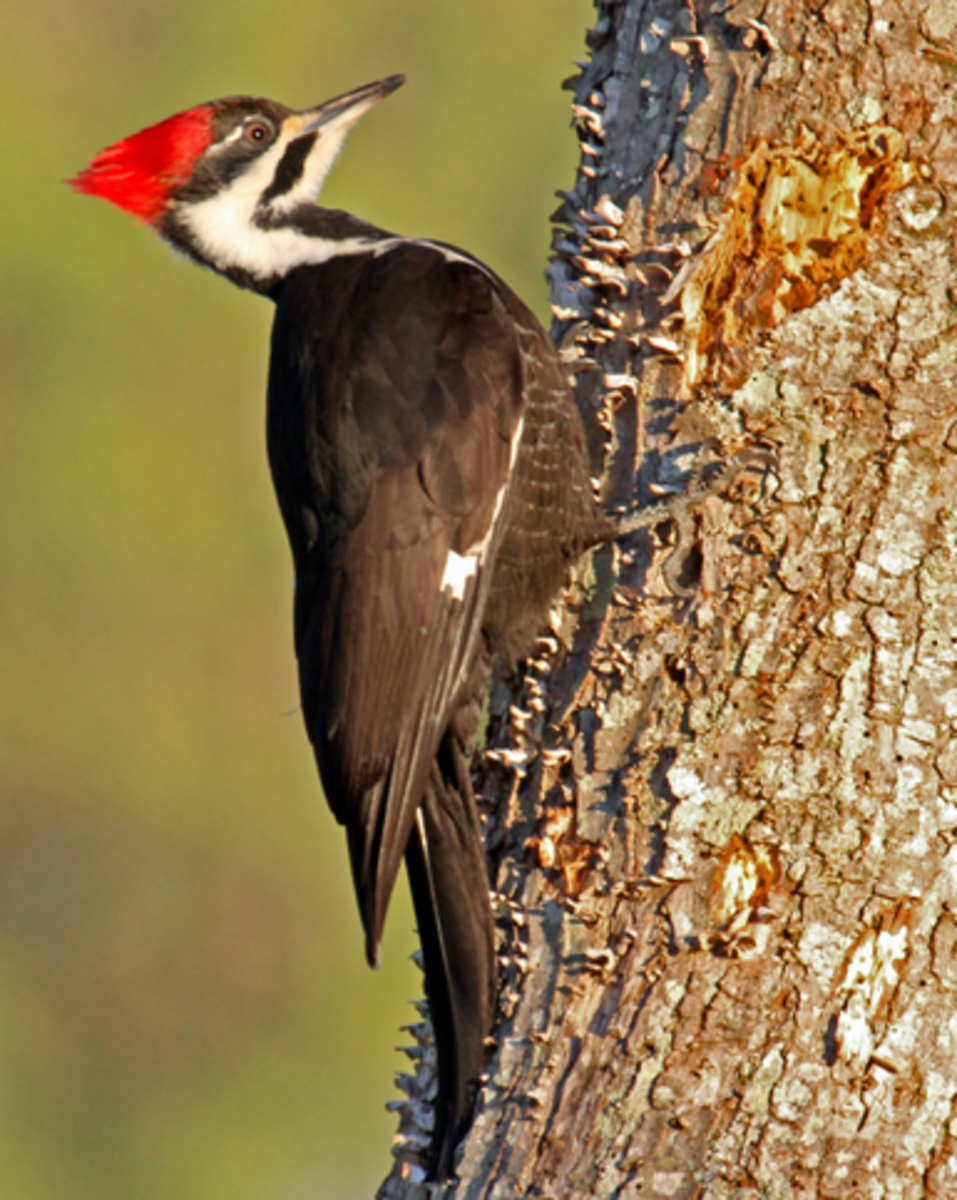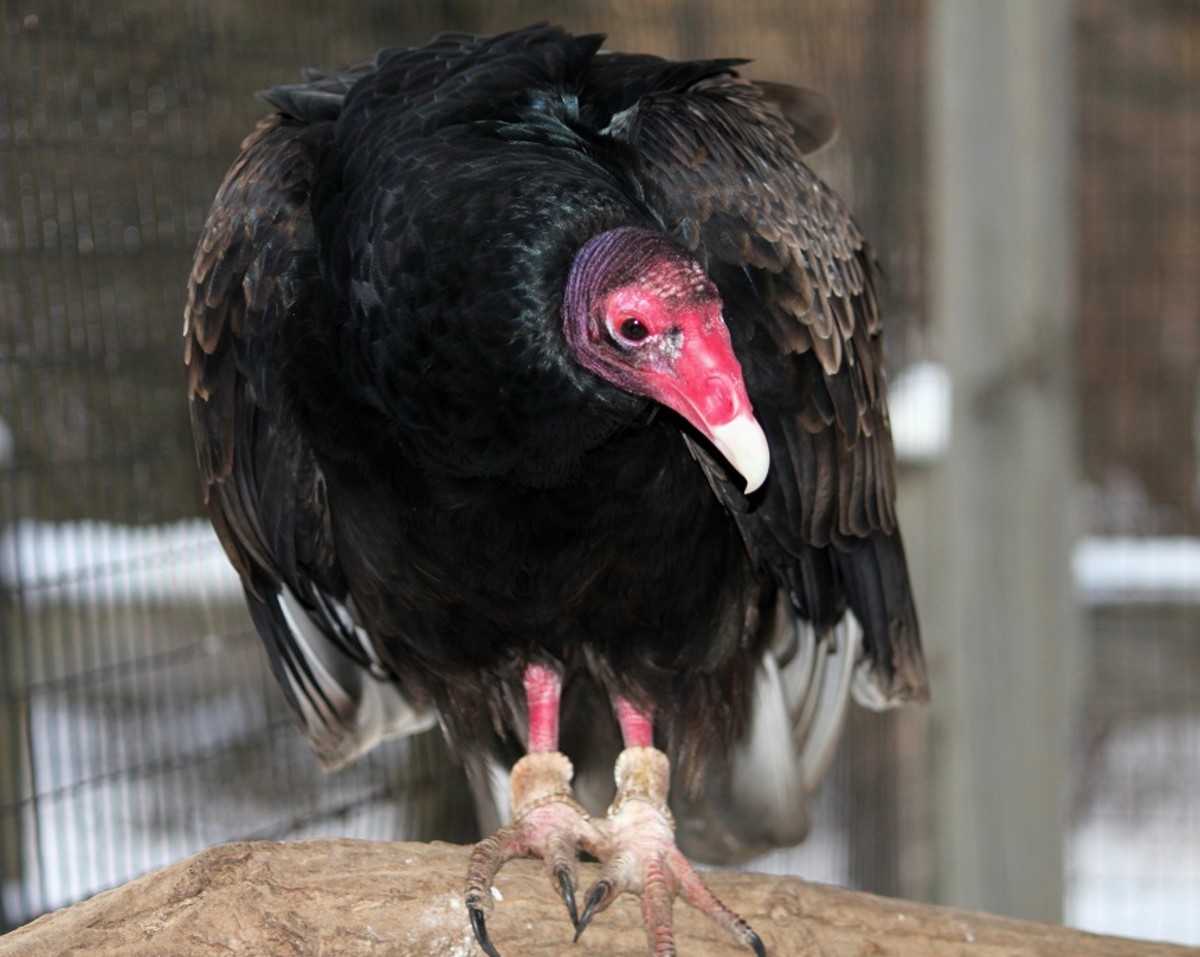Flying Ostriches From The Back Of An Ostrich
I speak from experience. I'm aware that an elephant's knee is hairy and the bareback ride on his spiny back is boney, even if you have a big butt. I'm equally sure that doing the high-ho-silver on the back of a horse, intent on sending you airborne is another ride you won't soon forget.
Nor, is hanging on for dear life to the wings of an ostrich, even remotely something like what Sinbad the Sailor experienced in the second of his seven voyages. Even though these biggest of birds can't fly with you on their back, they sure can run, spin, dump you on the ground and give you a swift kick of a souvenir.
I left a bit of my dignity in that dirt landing that day near the border of Mexico. My souvenir bruise covered just about my entire thigh and I was lucky nothing was broken.Fortunately for me, ostriches can only kick forward and people can only fall backwards off them.
It's not like the ostrich didn't warn me, nor was it a no-brainer that I am not coordinated -- and riding an ostrich requires a fair measure of coordination. I just didn't expect the spinning part. That bird spun around so many times that I landed in a dizzy haze, not quite sure where I was or which way to run, if I could have gotten up on my feet without help.
Looking back on the ride, I'm thinking the ostrich knew what I should have known -- that they are not beasts of burden and intended for riding. Mechanical bulls are a safer ride was my first grand conclusion, and my second thought was the reason we don't see flying ostriches is that they don't have to fly -- anyone riding one has just bought a first class seat to fly on their own.
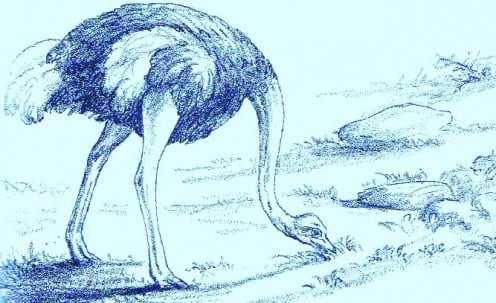
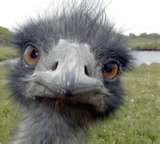

When Did They Forget How To Fly?
Before that crazy jig on the back of an ostrich, I fondly was aware, largely thanks to Disney's 1960 movie, Swiss Family Robinson and Western translations of what led to be The Seven Voyages of Sinbad the Sailor.
Sinbad the Sailor was accidentally left on an uninhabited island. He seemed destined to die a miserable death, thanks to giant snakes and even bigger birds who chased after them and him.
Then, a bird whose greatness darkened the sky swooped down. The intrepid Sindbad tied himself by the linen of his turban to the leg of the bird, which carried him to the famous Valley of Diamonds. Before the story was over he'd been rescued from his rescuers nest (with a bag of diamonds, of course) to return to Baghdad a rich man.
As a kid, I've imagined a flying ostrich from these stories (although Sindbad's bird was a Rok). Yet, I always knew there isn't actually a bird which could fly away with a person. However, we do have birds that can run away with even two people on their back. These strange monster birds are sometimes equal in bulk to three men. Even so, they do not darken the sky as Sinbad's bird did, for a sufficient reason -- over time, these giant birds have forgotten how to fly.
Maybe it's just as well, as they fall in the category of an awe-inspiring whale's tail slapping the ocean, the giraffe's hind leg, the paw of a lion -- all of them so powerful. The ostrich is just like them in this respect -- one well placed kick of an ostrich can break a man's leg or even kill him. That's pretty smart of them, because kicking and running is about the only defense they have when threatened.
Tips For Riding Ostriches
Most places that offer such rides have strict rules about riders not being too heavy, etc Depending on where the ostrich ride takes place, you'll either be mounted on top the bird via a V-shaped coral, with a hooded bird (to keep him calm) or off a corner ladder.
- Make sure the first thing you do is have your legs tucked under his powerful wings.
- If possible cross your legs in front of the ostrich, locking your ankles together.
- Hold on tight on the top part of the ostrich's wing.
- Find a balanced position, keeping your legs locked.
- Be prepared for spinning, bucking, and especially sudden stops that will cause you to suddenly depart your ride.
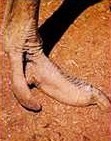
The Living Periscope That Can Run Like the Wind
Most ostriches measure up to eight feet to the crown of their head, and nearly five feet to the top of their backs.
True ostriches are native to Africa. South America has their cousins, the Rheas. Australia and Asia have Cassowaries and Emus. New Zealand still has the little cousin of the extinct Giant Moas, in the Kiwi.
The ostrich is in the wild nature's child of almost desert conditions, and they represent triumph over adversity. They are a bird of many animal friendships in their native Africa. When the chicks are hatched, they move off into the company of zebras and antelopes. They tower above them and act, as sort of an animated periscope for the herd to spy out danger from afar.
Should the menace approach nearer, they can run like the wind. Only cheetahs run faster than they do. Extraordinary estimates of the ostrich's speed are set down, even as much as sixty miles an hour, for the first great burst of energy. After that first burst, they can easily run for longer periods of time at around forty miles per hour.
You might be wondering, how is it then, that horsemen are able to run the ostrich down?
In broken country it cannot be done fairly. The bird can race right away from the fleetest horse under such conditions. However, several horsemen acting in concert, can him in an ostrich flock and effect a capture by advancing from several directions at the same time.
Yet, for all their speed and powers of endurance, the ostrich likes to keep in a certain neighborhood. So they generally run in a great circle, bringing themselves back to the point form which they set out. Knowledge of that fact, enables the hunter to get within striking distance by covering only a small part of the distance the bird has travelled.
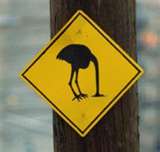
The Fable Of The Ostrich
There is no truth in the myth that ostriches bury their heads in the sand and think themselves safe from capture.
It's believed that this myth came about in this notion is that the young, and sometimes a nesting parent, stretch their necks flat on the sand, as they cower down, seeking to avoid recognition. Additionally, in the wild, they are known to disguise themselves by laying out on their sides to blend in with the terrain.
Indeed, there is no reason why they should bury their heads in the sand. Their great length of neck is given them in order that they might see great distances. Of course, with so huge a frame drowned by so tiny a head. They have not much mental power, but they have something a little better sometimes -- exceptional instinct and courage.
Wild Ostrich Ride In South Africa
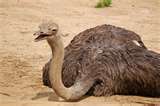
Commercial Raising Of Ostriches
Products made with ostrich hides are highly sought after and fairly expensive. Some examples are:
- Ostrich boots
- Ostrich handbags and wallets
- Ostrich meat
- Ostrich eggs
- Ostrich feathers
Obviously, ostrich eggs and ostrich meat are one of the biggest commercial uses of this bird. I've enjoyed both, and would choose an ostrich burger any day over beef. It's leaner and has a better taste.
In Natural Settings And On Ostrich Farms
In the wild, the male ostrich has perhaps half a dozen female companions. These all lay their eggs in one nest, which the males sits upon throughout the night when danger from jackals and other predators is to be feared.
Usually one of the females sits upon them during the day, but often the eggs are left during daylight to the care of the sun, but not before they have been liberally covered with sand to prevent them from being scorched and addled by too great a heat.
Very often more eggs are laid than one bird can cover. So the parent birds are said to break them for food for the young chicks that do hatch. An egg weighs about as much as two dozen chicken hen's eggs do.
Under wild conditions the ostrich eats anything that can be eaten, but especially likes snakes, lizards, small mammals, birds, insects and great quantities of vegetation.
Also in order to aid digestion, it swallows pebbles and even stones as large a a regular chickens eggs.
Ostriches, of which there are several species have but two toes, armed with short, blunt and lethal nails.
In South Africa, Argentina, parts of the Middle East, Southern Europe, and the United States -- ostriches are now farmed like poultry. However, because it takes several acres of land to sustain just one ostrich -- the world is running out of places to make ostrich farming practical.
On those farms, ostriches are often confined in V-shaped wooden stalls. Their heads are covered with a hood, which renders the bird passive and harmless. They are raised for their eggs, meat (which is excellent tasting), and for their feathers.
Dirty Jobs - Hooding An Ostrich
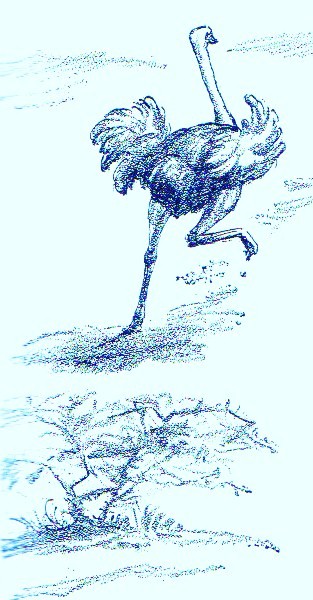
If You'd Like To Know More!
- Ostrich Boots
Ostrich Boots - Ostrich Boots, Ostrich Cowboy Boots, Ostrich Western Boots, Ostrich Leg Boots, Smooth Ostrich Boots Don't see what you want? Search here for thousands of Boots in Stock Search ... - Ostrich Feathers
Natural, bleached and dyed ostrich feathers for decorations and costumes - Ostrich Ride in South Africa
Ostrich Ride in South Africa - Information about Ostrich Ride in South Africa: South Africa offers a top selection of ostrich riding activities for fun-filled adventure. - Ostrich - It might just be the next meat on your grill
Leaner and lower in cholesterol than turkey with a taste and texture similar to beef. This meat is made for grilling.

